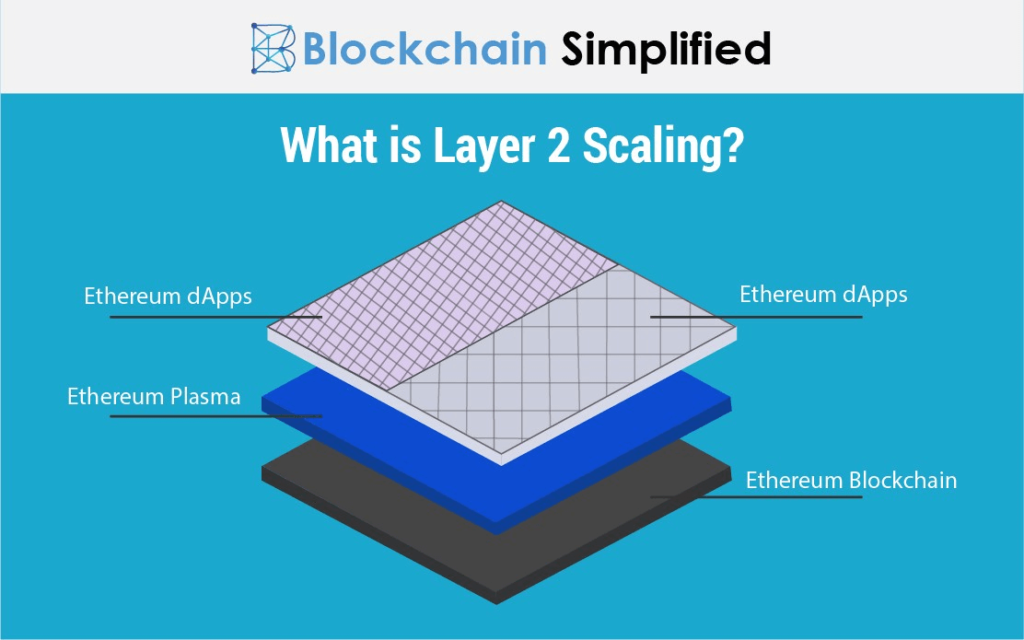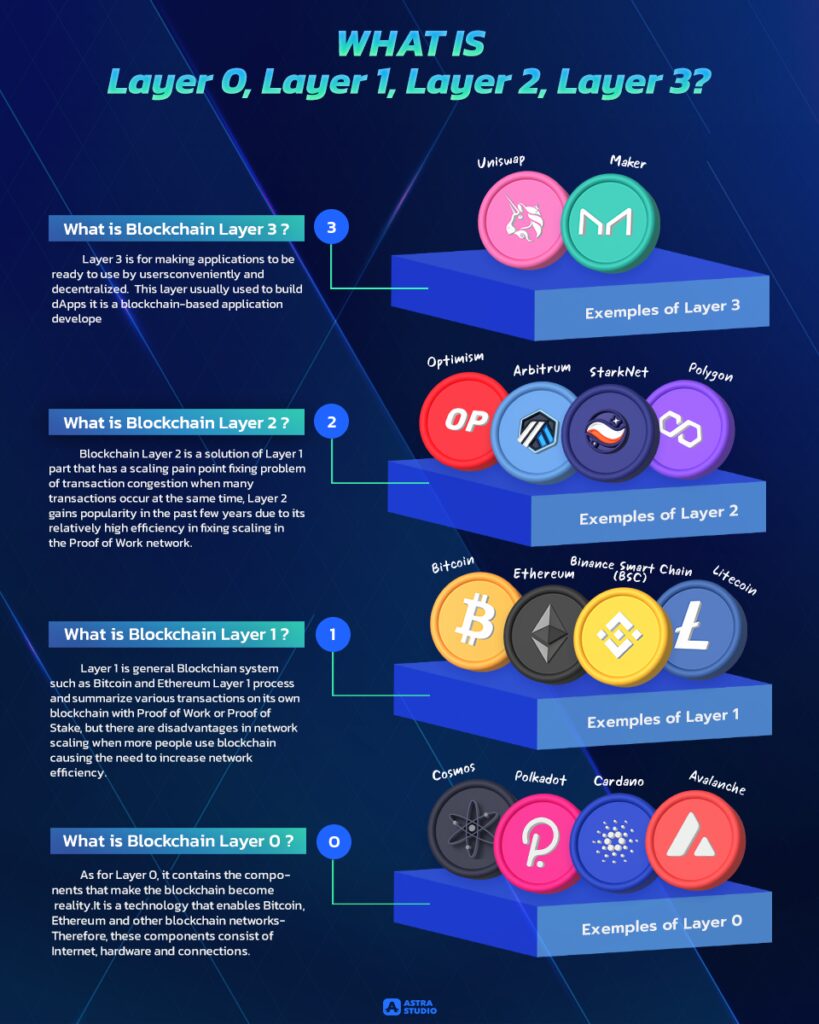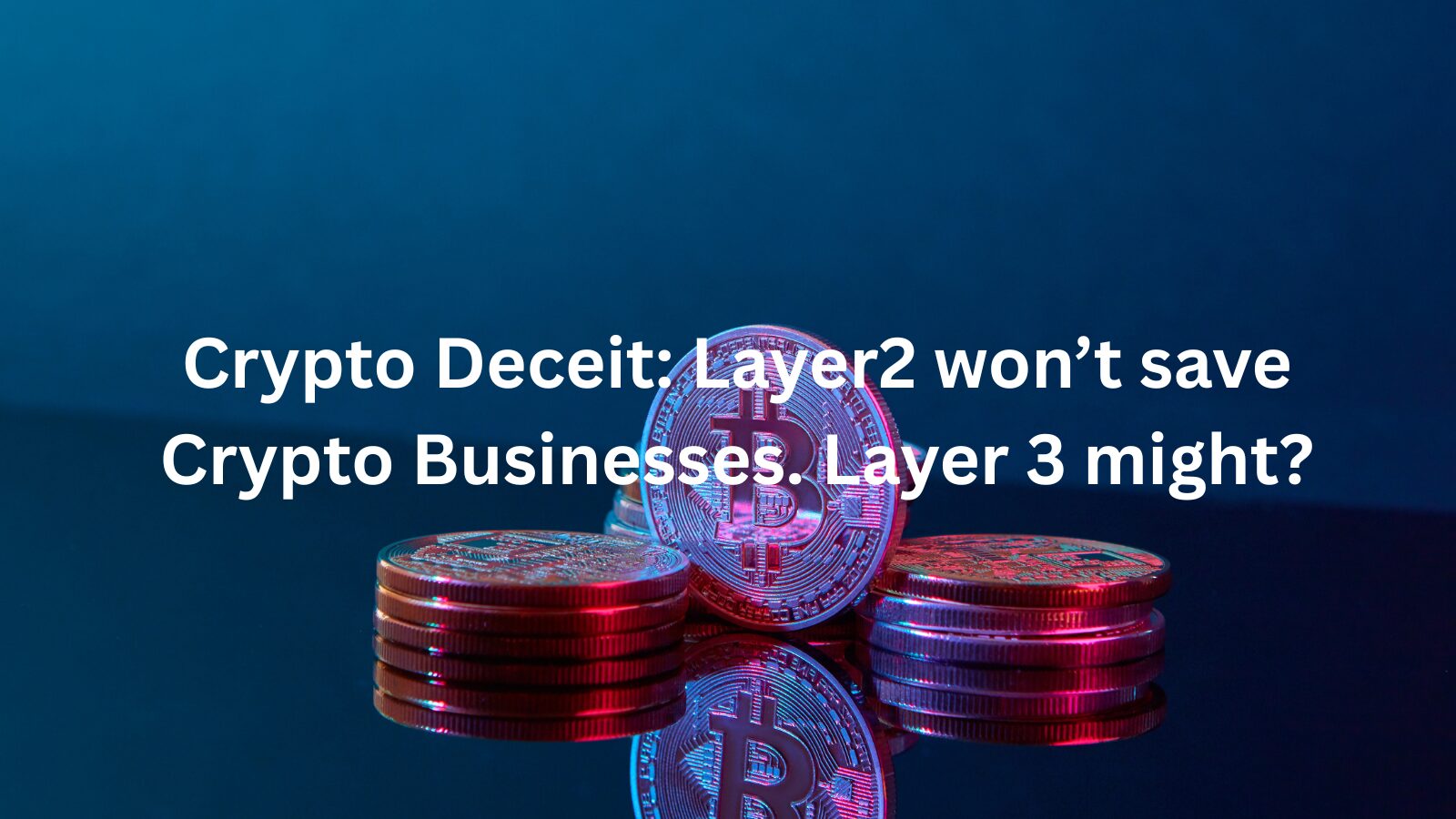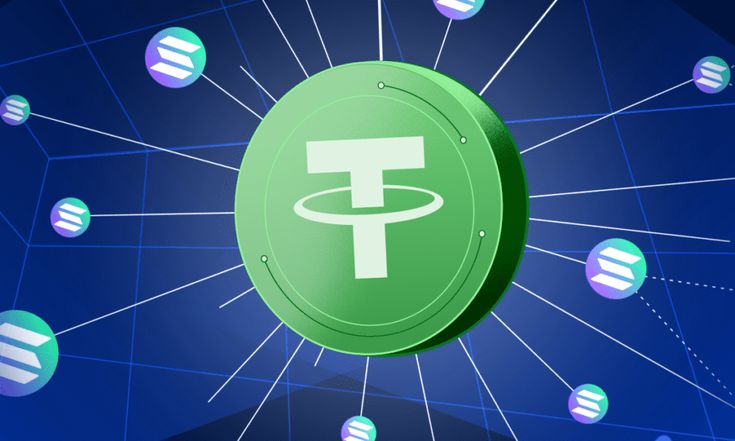The crypto industry faces scalability challenges. This challenge brings about high transaction fees and slow processing times, making it hard for crypto and Web3 businesses to grow.
Layer 2 (L2) scaling solutions have emerged, introducing cutting-edge solutions like roll-ups and side chains with the claim that they will reduce transaction costs and improve transaction speed. However, these layer 2 solutions also come with their challenges, such as security breaches, complicated user experiences, and fragmentation of liquidity.
Enter layer 3 (L3) blockchains, which are emerging as a better solution and game-changer. Unlike L2, L3 technologies focus on custom scalability, improved interoperability, and better business-friendly applications. The question is, could layer 3 be the real solution to unlocking business growth and crypto adoption?
This article explains why Layer 2 won’t Crypto and web3 business buy Layer 3 might.
What is Layer 2, and how does it work?

Layer 2 (L2) was designed to solve scalability issues for Ethereum. Rather than processing all transactions directly on Ethereum’s main chain (Layer 1), separate networks process these transactions independently and then send the final result back to Ethereum. This process ensures low congestion on the network, lesser gas fees, and faster transaction speed.
There are two main types of L2 rollups:
- Optimistic Rollups: Enable significant improvement in performance and scaling. They do this by making sure that transactions are valid unless proven otherwise. Examples include Arbitrum and Optimism.
- zk-Rollups (Zero-Knowledge Rollups): Bundles many transactions into a single proof, making them more efficient and secure. Projects like zkSync and Starknet use this solution in their ecosystem.
While these solutions have improved scalability, they have also introduced new challenges that limit their ability to support businesses.
Challenges of Layer 2 Solutions
- Capital Inefficiency Across L2s
One of the biggest problems with L2s is liquidity fragmentation. Each L2 operates separately, meaning funds are spread across different networks. For example, a user might have assets on Arbitrum but need them on Optimism. Moving money between L2s often requires bridging, which is slow, expensive, and risky.
- Bridging Issues and Security Concerns
Bridges are a major security risk—they have been targeted in multiple high-profile hacks, causing investors to lose hundreds of millions of dollars. For businesses, this increases customer friction, as users may be hesitant to move funds across different layers due to security concerns and transaction delays.
- Reliance on Ethereum’s main Chain
Layer 2 solutions rely heavily on Ethereum, which means that they inherit its flaws. If congestion hits Ethereum, L2s may also suffer delays and high fees. Some L2s have built-in centralized elements too, such as relying upon small bunch or upgrade systems which are controlled by a single entity.
- Lack of interoperability between L2 Networks
Different L2 networks do not communicate efficiently with each other, making it difficult for businesses to operate across multiple chains. If a DeFi protocol or NFT marketplace wants to expand, it must integrate separately with each L2, increasing development costs and time.
Why Layer 2 is not enough to Support Businesses
Even though L2s reduce fees and speed up transactions, they create new barriers that obstruct effective scaling for businesses. Liquidity fragmentation, complex user experience, and security issues all create problems for growth.
L2s may not be the conclusive answer to efficient, scalable, and user-friendly blockchains on solutions. This is where Layer 3 (L3) solutions come in, which are more flexible with better interaction or scaling, supporting business growth.
Enter Layer 3: the future of Scalable Crypto Business?
By building atop Layer 2 networks, Layer 3 (L3) further enhances blockchain scalability by providing custom solutions for particular applications. Unlike L2, which alleviates congestion on Ethereum, L3 specializes in business-centric scalability, enhanced interoperability, and ease of use.

It enables projects to establish fully-fledged execution environments, guaranteeing minimal fees, quick transactions, and effortless cross-chain communication.
One of the main features of L3 is enhanced interoperability with several L2 networks, which solves the problem of liquidity fragmentation. This provides businesses with arguably greater freedom, as they can independently create their blockchain environment without being subjected to the limitations of Ethereum.
There are also greater security measures in place since assets on L3 networks can be protected with specialized security protocols.
L3 is the more pragmatic solution for mass crypto adoption as it provides reduced user complexity, lower operational costs, and scalable, ready-made business infrastructure. Businesses can operate without the restrictions brought by L2 solutions, enabling efficiency.
Crypto Projects Experimenting with Layer 3
A variety of blockchain initiatives are looking into Layer 3 (L3) solutions to enhance scalability, interoperability, and customization above the available Layer 2 (L2) systems.
- Polygon’s AggLayer: seeks to resolve blockchain fragmentation by enabling autonomous chains to share liquidity, users, and state in a secure environment. The AggLayer is a decentralized protocol with a common bridge and zero-knowledge (ZK) feature that enables cross-chain interoperability. It hopes to interconnect various blockchain networks into a single ecosystem so that users will have a better experience while liquidity will flow more freely.
- zkSync: is working on an L3 prototype termed “Pathfinder” expected to allow more scaling of Ethereum by using recursive scaling methods. In tests planned for early 2023, Pathfinder will deliver customizable, trustless linkable blockchains – “HyperChains”, powered by zkEVM. This initiative aims to change the game from limitless scaling to limitless customizing, which can change an entire range of blockchain platforms.
- Starknet: is experimenting with L3 solutions to offer tailored blockchain environments for specific applications. Utilizing its native programming language, Cairo, Starknet’s L3 approach focuses on creating app-specific rollups that provide enhanced scalability and efficiency. This strategy will allow developers to design solutions that meet unique business requirements.
Future of Layer 3 and What It Means for Businesses
Even with less congestion, L2 Solutions do not meet the requirements for liquidity fragmentation, interoperability, and added business complexity. Business needs are not fully met with their solutions.
Layer 3 provides a more optimal solution, allowing businesses to create customized, efficient, and scalable environment without the bothersome constraints of Ethereum.
For enterprises, this translates to reduced cost, enhanced security, and seamless cross-chain communication. Layer 3 makes blockchain easier to integrate across industries such as gaming, DeFi, and enterprise-level solutions, thereby increasing the efficiency and faster transactions.
Scaling alone does not help businesses as they grapple with liquidity and interoperability challenges. With L3 Solutions, businesses can adopt blockchain with greater ease while catering to the changes needed in a fast-paced environment.
Read also: Crypto 2.0: How Crypto Consumer Applications Increase Mass Adoption






